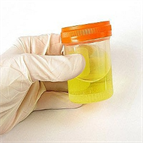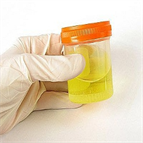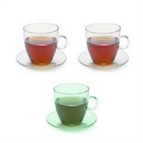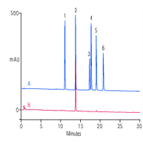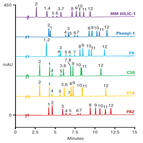Find methods for your needs
Refine by Feature
Displaying 1-5 of 19 results for Tag: Alkaloid
Forensic Screening for Drugs in Urine Using High-Resolution MS/MS Spectra and Simplified High-Performance Screening Software
Instrument Type: LCMSMSForensic toxicologists need an economical solution to screen for a virtually unlimited number of compounds in urine. Here we present a method for screening using a dilute-and-shoot approach with the Q Exactive Focus mass spectrometer and Thermo Scientific ToxFinder software. For forensic use only.
Quantitation of 122 Drugs in Urine by Triple Quadrupole Mass Spectrometry
Instrument Type: LCMSMSForensic toxicologists face an ever-expanding list of compounds for analysis. This note presents work done using a next-generation triple quadrupole mass spectrometer with fast SRM acquisition speed for quantitation of 122 analytes in a single chromatographic run, where scan speed does not impact sensitivity or quantitative performance. Compounds analyzed include opiates, opioids, benzodiazepines, barbiturates, amphetamines, tricyclic antidepressants, illicit compounds, and more. For forensic use only.
Metabolomic Analysis of Green and Black Tea Extracts Using an LTQ Orbitrap XL Hybrid Linear Ion Trap Mass Spectrometer
Instrument Type: LCMSMSWe demonstrate a complete analytical metabolomic workflow including (1) data acquisition using a high resolution accurate mass instrument that is equipped with a Higher Energy Collisional Dissociation (HCD) cell and coupled to a high pressure LC (Figure 1), (2) metabolite differential abundance analysis, and (3) structural elucidation of relevant metabolites using accurate mass and HCD fragmentation information to highlight the component differences between green and black tea.
Analysis of alkaloids in bitter orange extract by HPLC-UV
Instrument Type: HPLCThe Thermo Scientific HPLC system is applied for the analysis of alkaloids in bitter orange extract which is an ingredient in traditional Chinese medicines. The separation is performed on a Thermo Scientific Acclaim 120 C18 column, with UV detection at 224 nm and is suitable for assaying ingredients and formulations for bitter orange and its active constituents. Chromatogram A is standards and chromatogram B is an extract of bitter orange.
Comparison of six stationary phases for the separation of catechins
Instrument Type: HPLCThe Thermo Scientific UltiMate 3000 RSLC system is applied for the analysis of catechins. The separation is performed on six different stationary phases; Thermo Scientific Acclaim C30, Acclaim Mixed-Mode HILIC-1, Acclaim Phenyl-1, Acclaim 120 C18, Acclaim PolarAdvanage and Acclaim PolarAdvantage II. The results were compared.

